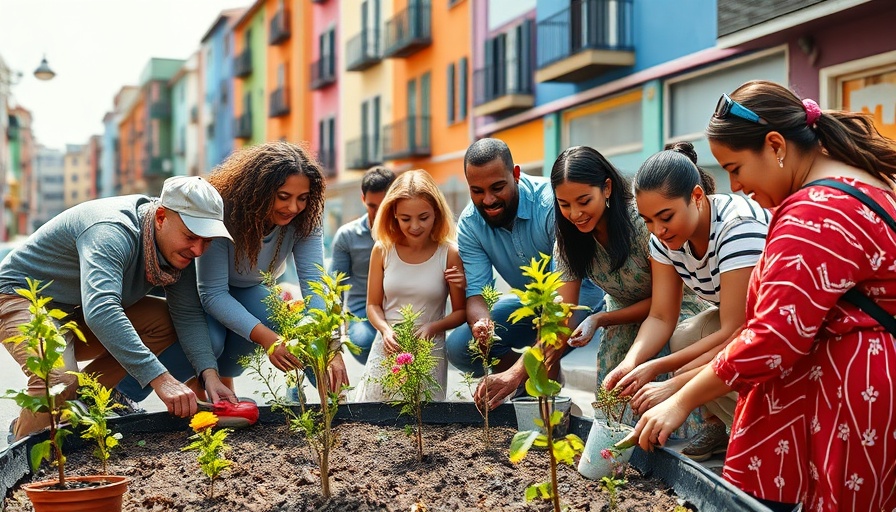
Transforming Neglected Spaces into Vibrant Community Gardens
When Lila Bennett moved into her cul-de-sac neighborhood two-and-a-half years ago, she was immediately struck by a neglected, weedy strip of land. This otherwise unused space sparked an idea that would transform the area into a flourishing community street planting project. As she surveyed the land, with its solitary trees and pathways, she envisioned a vibrant, green space that could bring her neighbors together. This article shares the journey of creating a community garden, offering valuable insights for those who wish to tackle similar projects.
Planning for Success: Establishing a Vision
The first step in Lila’s project was not just about aesthetics; it was about creating a sustainable, low-maintenance plan. Drawing on her previous success with a community fruit tree initiative, she recognized the unique challenges presented by the Perth climate, primarily the harsh sun and limited rainfall. Her goal was to select native Australian plants that require minimal water, ensuring the lush greenery could thrive in its new environment.
Low maintenance was key. Lila wanted a garden that wouldn’t require exhaustive upkeep, avoiding the need for pruning, pest control, or complex irrigation schedules typically associated with vegetable gardens or fruit trees. Instead, she opted for a mix of native flora coupled with a few indigenous bushtucker plants—an idea that not only promotes biodiversity but fosters community education about local ecosystems.
Gathering Community Support: A Collaborative Effort
Once the plan was set, Lila reached out to her neighbors, eager to determine their interest and involvement. To her delight, half of the residents responded positively and expressed their enthusiasm for contributing. This collective spirit was a central tenet of the project. Not only did it ease labor demands, but it fostered a sense of community ownership and shared responsibility for the success of the garden.
Beyond gardening, Lila found a creative way to fund the initiative through 'Cash for Containers,' encouraging residents to recycle their beverage containers for cash refunds. This strategy enabled residents who may not have the physical ability to weed or plant to still play a vital role in supporting the project financially.
Benefits of Urban Greening: More Than Just Aesthetic
The planting project in Lila’s cul-de-sac serves more than just a beautification purpose. As cities confront escalating issues like heat islands and biodiversity loss, green spaces like this one contribute significantly to the health of both residents and the environment. Research has shown that urban greening can reduce the carbon footprint, improve air quality, and even elevate the mental well-being of community members. Investing in such projects aligns with broader sustainability strategies, promoting sustainable development and green urbanism.
Future Predictions and Opportunities for Community Gardening
Looking ahead, Lila remains optimistic about the potential impacts of her community project. As climate change continues to challenge urban living, the demand for community-based solutions to sustainability is expected to grow. The importance of initiatives like tree planting and renaturation will only become more pronounced. The success of Lila’s street could inspire similar undertakings in other neighborhoods, initiating a ripple effect of grassroots sustainability movements.
Decisions You Can Make with This Information
If you're passionate about transforming your community spaces, consider starting with small, actionable steps. Engage your neighbors and share your dream. Focus on selecting the right plants that suit your local climate and landscape. Additionally, think creatively about funding strategies like container deposit schemes or local sponsorship to support your efforts. These steps not only facilitate the implementation of a gardening project but also foster community ties and a shared commitment to sustainability.
Take Action: Start Your Own Community Project
Lila’s journey showcases that creating a vibrant community project can stem from a simple observation. It’s vital to recognize that each small action contributes to greater ecological health and stronger community bonds. As you consider initiating a project in your neighborhood, envision the long-term benefits it can offer—not only for your immediate surroundings but also for future generations. So, gather your neighbors, brainstorm ideas, and start planting the seeds of change.
 Add Row
Add Row  Add
Add 




Write A Comment